The Omega Seamaster is one of the most recognizable dive watches on the market, today. Even before its modern-day placement on James Bond’s wrist in the Daniel Craig era, the timepiece has been one of the most popular models in the diving category in its Professional and 300 iterations since 1957. Yet before its release as a full-time diver, the Seamaster was better known as a small dress watch cast in steel and frequently gold (vintage picture below, via Theo & Harris). This Seamaster, the elegant precursor to the modern diving series, was first brought to boutiques in 1948 and was informed heavily by Omega military watches of the previous decades. The design was thus exalting both form and function, with great reliability and water resistance for its era, and simultaneously holding great sophistication. It was personally one of my favorite eras for the Seamaster and is the inspiration for today’s watch of focus: the new Omega Seamaster 1948.
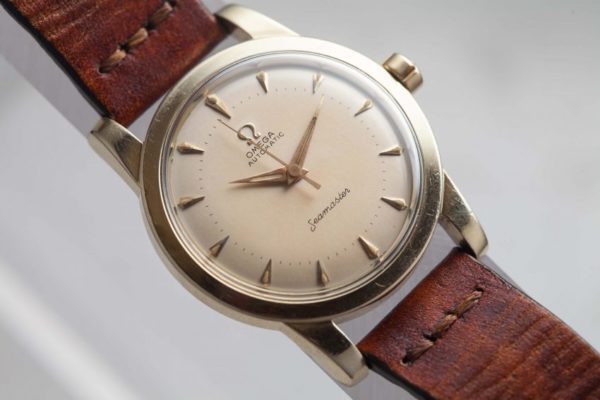
As the most recent addition to the Seamaster collection, its available in two different dial layouts, one with a central seconds hand and one with small seconds subdial at 6 o’clock. Both are 38-mm in diameter in polished steel and have a subtle crown, short lugs, and flat bezel. The domed opaline dials are what differentiate the two models, though both share applied hours markers with Arabic numerals at the quarters and pyramids in-between. On the central seconds model is a quiet chapter ring just inside the hour indices, with dauphine hands for the hour and minute indicators and a simple pointer hand to count the seconds. This model is also accented with spots of faux-patina lume (most likely Super-LumiNova, though the brand did not specify). On the small seconds model is an outer railroad track minute ring, with leaf hands slowly turning about the dial, and a small indented 6 o’clock sub-dial for the running seconds. The same as the hour markers, towards the top of the face on each is an applied white hold Omega logo in the vintage design, with the watch’s name and technical descriptors below it.
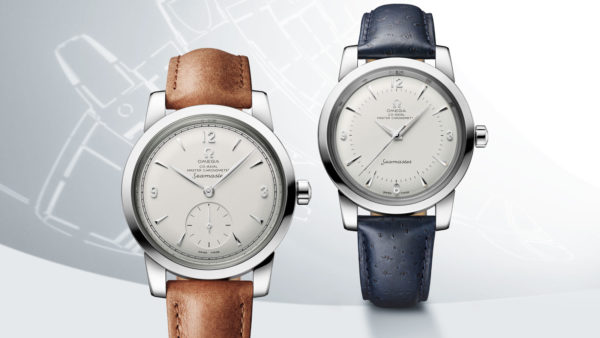
As required by their differing dials, the two pieces use two different automatic movements. The central seconds model hosts an Omega Caliber 8806, capable of a 55-hour power reserve, while the small seconds watch uses an Omega Caliber 8804 capable of a 60-hour reserve. Like most, if not all, of the brand’s new watches these days, both movements are METAS Master Chronometer Certified and anti-magnetic up to 15,000 gauss. Each of the refined movements are also visible through a commemorative sapphire case back secured by Omega’s revised “Naiad” locking system. Each of the watches are limited to 1948 examples, and will begin shipping in October 2018 for around $5,700 for the central seconds model and $6,100 for the small seconds.
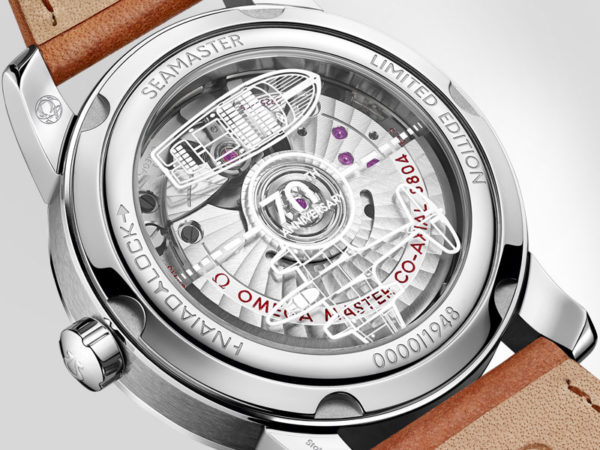
In each of these watches are plenty of vintage influences with modern refinements. A few horological pundits have argued that both of the designs have more or less ‘40s and ‘50s characteristics, though, for the relatively short production run of the design (about ten years in this isolated form prior to the Seamaster 300 series), it would be difficult to pinpoint elements from specific years outside of a rare Omega savant. Instead, let’s note the vintage characteristics in each which have drawn the novelties so much attention. In both, you’ll see the distinct case shape in steel, and while the Seamaster was released in a variety of case shapes and materials, it was the steel, short lugged, unique crown, flat bezel design to hold prominence during the original era and on vintage markets today. Then, on the dials, you’ll notice the applied numerals — again, the most popular style of markings on the original — and inside the watches you’ll find automatic movements uncommon during the historical era on the market, but very common in this series, although the movements were more commonly early “bumper” calibers instead of using modern bidirectional rotor systems (vintage pictures below).
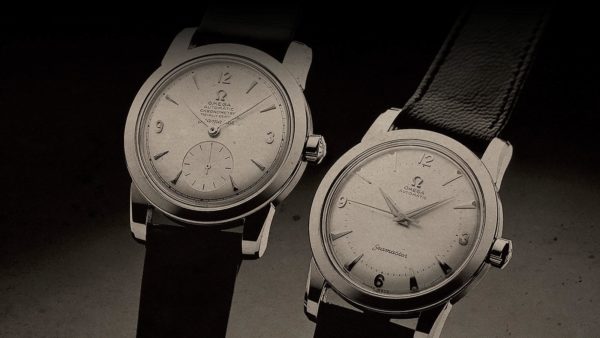
More specifically for each of the models, it is the central seconds model which features the more historically common design, while the small seconds edition uses the rarer style face. These elements are seen on the former watch in the dauphine hands, the placement of the Seamaster logo, the minute ring— all of which were part of a style mass produced in the series’ run, and still very common in vintage markets today. While in the small seconds model, the leaf-hands and railroad minute ring style used is slightly rarer in the original era and further in vintage boutiques today, which might partly account for the slightly higher price point for the watch.
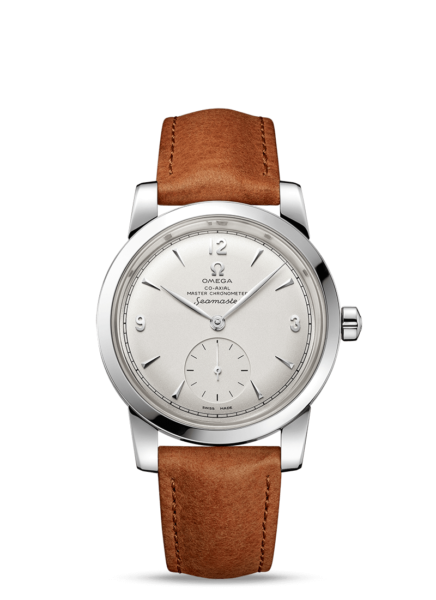
The contemporary changes for each are also apparent. The cases are 4-mm larger than the vintage models at 38-mm, as well as significantly more refined featuring sapphire case backs with elegant modern movements. The dials are slightly domed and use an opaline color, compared to the flatter and whiter versions seen in the past; and the applied features are each white gold instead of the more historic steel. Outside of modern refinement and enlargement, the largest change is in price point. The original watches were dress watches accessible to the masses, today sometimes described as “entry level” models — sturdy pieces representing a great value for the money to be worn through one’s whole life at weddings, business meetings, funerals, and to eventually be passed down to one’s heirs. These current Seamasters appeal no longer to consumers as entry-level, and much more as novelties to vested, long-term collectors.
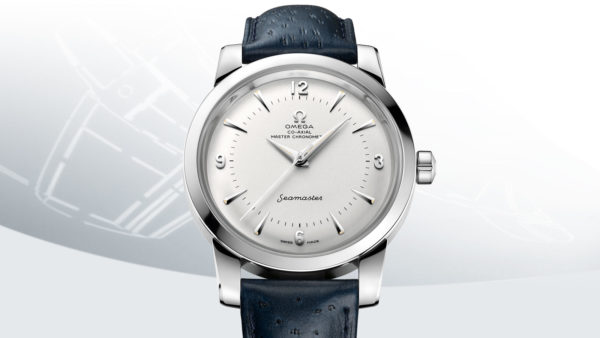
This year marks the 70th anniversary of Omega’s longest running series, and even for the significant marking of another decade for the Seamaster, these two models did seem to catch much of the media off-guard. While it has been known the 1948 to 1957 models of the watch existed and today are often cherished on vintage forums, this period was marked by many different dial configurations and case shapes in the series, so the era seemed too non-cohesive and further overshadowed by the post-1957 300 and later Professional models to warrant modern homages — let alone two. Yet these are strange times for the market, with nostalgic designs driving new sales and the histories of modern watches bringing in new collectors. Though it is not news Omega, accompanied only by a few peers, knows this better than anyone else, and now we have two new watches in the era of “new vintage.”
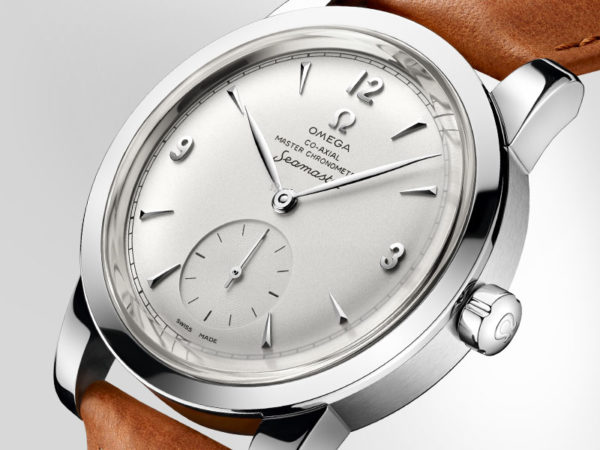
For the most recent article in the “Vintage Eye” series, in which we compare the IWC Pilot’s Watch Chronograph Ref. IW377724 to its historical inspiration, click here.
Caleb Anderson is a freelance writer with a primary focus on vintage watches. Since first discovering horology, he has garnered extensive knowledge in the field and spends much of his time sharing his opinions among other writers, collectors, and dealers. Currently located near New York City, he is a persistent student in all things historical, a writer on many topics, and a casual runner.



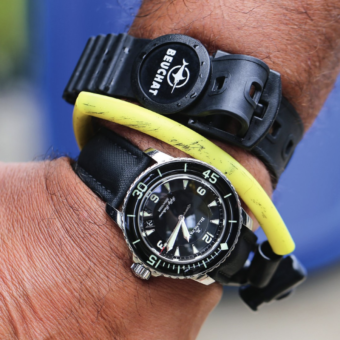
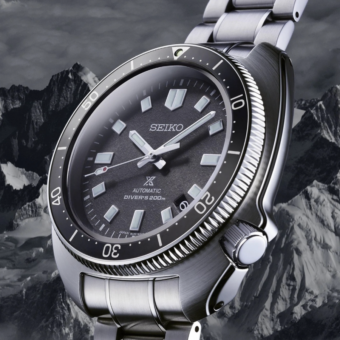
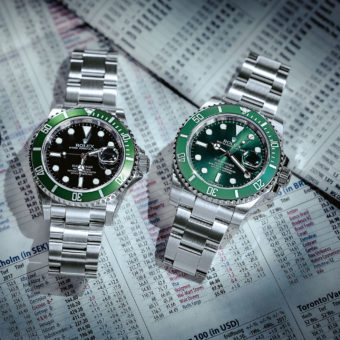
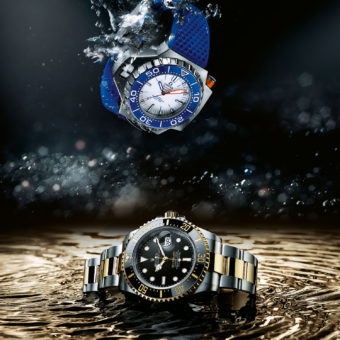
Hi, I have a vintage Omega Seamaster 1948 .. what is the estimated value?
where can I find one?
Any idea where I can find a Omega Seamaster 1948 limited edition? Retail store? I live in NY.
Hi I am looking for a omega seamaster 1948 small seconds
From the Manhattan “Mad Man” mogul to the
main street man at Mike’s carpet sales the Omega Seamaster was my second true love behind my 1957 Schwinn Phantom till this day. My first watch I recieved from my neighbor who was a Veteran who was trained after the war by Hamilton and he gave me a 1957 Omega Seamaster cal.420 winder that I have till this day.It was a watch that came in for repairs and was never picked up.I have other watches in my collection. My dad gave me his Vulcain Cricket when I was graduated High School. The mid- century Omega Seamaster is a horology success that united a spectrum of watch geeks and let experience of ownership evolve into a symphony of success! “Time may not be on my side but it’s always on my wrist” thanks for the article and the trip down memory lane!!!
I have in my procession , All Vintage from the early 60″s Omega Seamaster,, a Rolex date-adjust and Mido Ocean Star . And of course My first watch when in the 7th grade(1959), my Dad’s 1946 Election GP military watch. I love the vintage style watches. But my daily work horse watch (tool) ,my rugged (1986) Seiko Chronograph Quartz . From the dessert, through oceans,through the storms and construction job site.